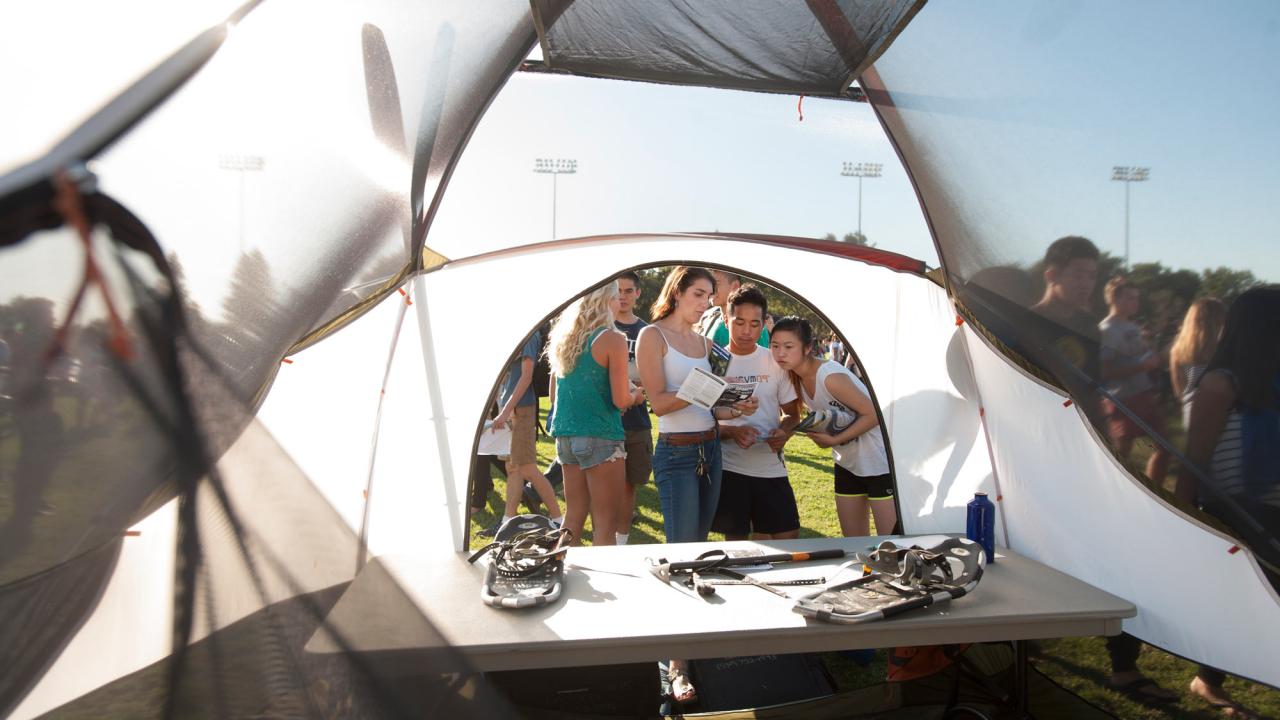UC Davis is thriving like never before. We’re consistently ranked among the top 10 public universities for accessible and affordable education, student outcomes, sustainability, diversity and internationalization. We got here through focused long-term investments in these and other key areas. A university like ours is committed to excellence in teaching, research and public service on behalf of California and beyond. We recognize that we want to do even better, and we’re regularly reviewing our strategic planning goals to measure our progress and elevate our targets.
Whatever we do or however we’re ranked, our students and their well-being and success will remain our top priority. Every decision we make is framed with that in mind — how we can best serve our students. Campus leaders don’t make decisions without listening to representatives from our community and doing our research. When we make a decision, we recognize that it’s highly likely that not everyone will be satisfied or happy, but we know that we have always made the best decision for UC Davis.
Recently, some in our community have expressed their unhappiness with our decision to eliminate PE activities for academic credit. We’ve also seen that reporters, alumni and others have mistakenly linked the PE Program to our Student Activities and Student Initiative (SASI) fee.
Clarifying misinformation
We want to clarify the misinformation that is feeding some of this dissatisfaction and unhappiness. First, student fees did not support the PE Program. PE was funded through the College of Letters and Science budget, which is allocated by the provost’s office and not through student fees. Some people have contended that there was an agreement that the university would fund and offer PE in perpetuity, and in exchange the students would fund Athletics through the SASI fee. However, there has never been an agreement that obligates UC Davis to fund or operate the PE Program. Neither the SASI referendum language approved by our Associated Students of UC Davis (ASUCD) in 1994 nor the University of California regents’ item that enacted the SASI fee references PE. Indeed, campus student fees such as SASI may not be used for any programs that award academic credit, as was the case with PE.
We also want to clear up other misunderstandings about the PE Program. The PE Program was eliminated after multiple reviews over many years, with reports either recommending closure or scaling back PE. PE had experienced steadily declining enrollment and it became apparent that awarding academic credit for physical activities did not match current best practices at most of our peer institutions, including at other Division I schools.
PE’s value never in question
Throughout our decision making, the value of PE offerings was never in question. We recognized the mental health and well-being benefits of students having access to a variety of extracurricular activities and to being physically active. Our intramural programs, Craft Center and Equestrian Center classes and Outdoor Adventures programs complemented our PE offerings and have continued.
Recognizing the importance of hearing directly from students who had enrolled in PE classes, we conducted a survey to determine what kinds of recreational activities interested them. Here are the students’ top three interests: regularly scheduled physical activity time, mental wellness, and learning a new sport or skill. In order to meet these interests, Campus Recreation added classes in Live Well categories that included 3,000 new openings per week in group exercise, as well as courses that enable students to obtain instructor certifications. Moreover, we were able to offer significantly more classes through Campus Recreation programs at the Activities and Recreation Center (ARC) because PE classes were no longer using the ARC, thus freeing up much needed facilities.
We also heard that students appreciated being able to take safety courses (i.e., CPR, CPR and AED, first aid, self-defense and basic swimming). In collaboration with the UC Davis Fire Department, we have made these courses available to our students at no cost through our Campus Recreation programs.
Mental health services
In an area of growing need, UC Davis continues to invest in and prioritize mental health services and support for students. We have significantly increased our investment and staffing in student counseling services and increased the number of providers.
We’ve done this by increasing counselors by 10 permanent positions to support more students. We’ve increased psychiatric staffing by three permanent employees, and Student Health and Counseling Services is partnering with the UC Davis Betty Irene Moore School of Nursing to involve psychiatric mental health nurse practitioners for further support. In addition, to enhance student support (especially during crisis), the campus plans to add four permanent staff as nonclinical case managers and is implementing an innovative crisis response model called Health 34 on campus. To help identify students at risk, the campus plans to invest significant funds on staff/faculty mental health training. Lastly, to help students develop life skills, promote social connectedness and increase help-seeking behavior, we’re developing a comprehensive mental health peer and marketing program.
Like any organization in the 21st century, UC Davis has modernized its offerings and practices in a variety of areas that meet growing needs. We will continue to serve students’ needs and interests first. That will not change.
Media Resources
Media Contact:
- Melissa Blouin, director, News and Media Relations, 530-564-2698 (mobile), mlblouin@ucdavis.edu
